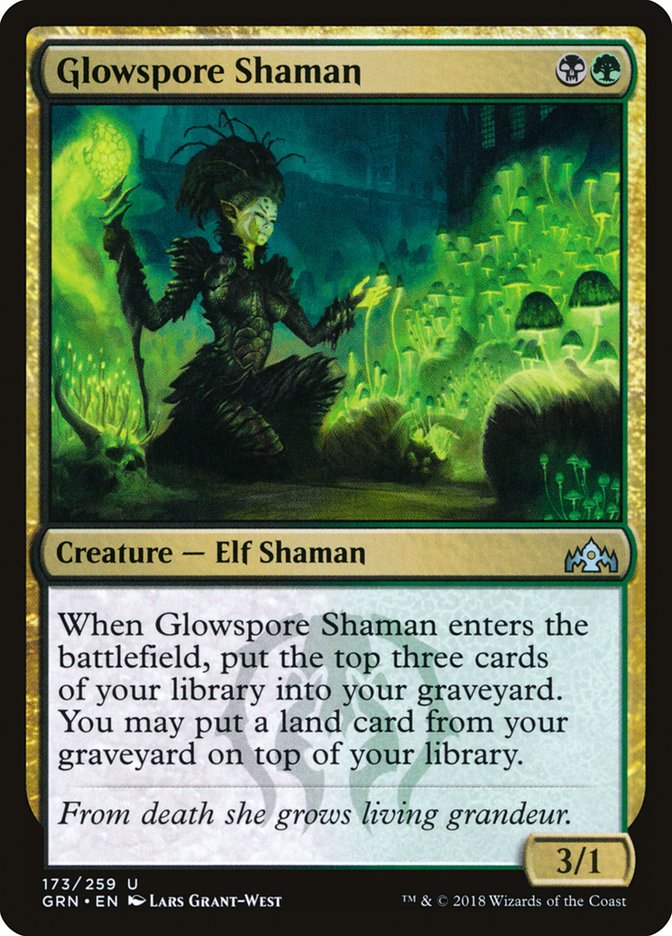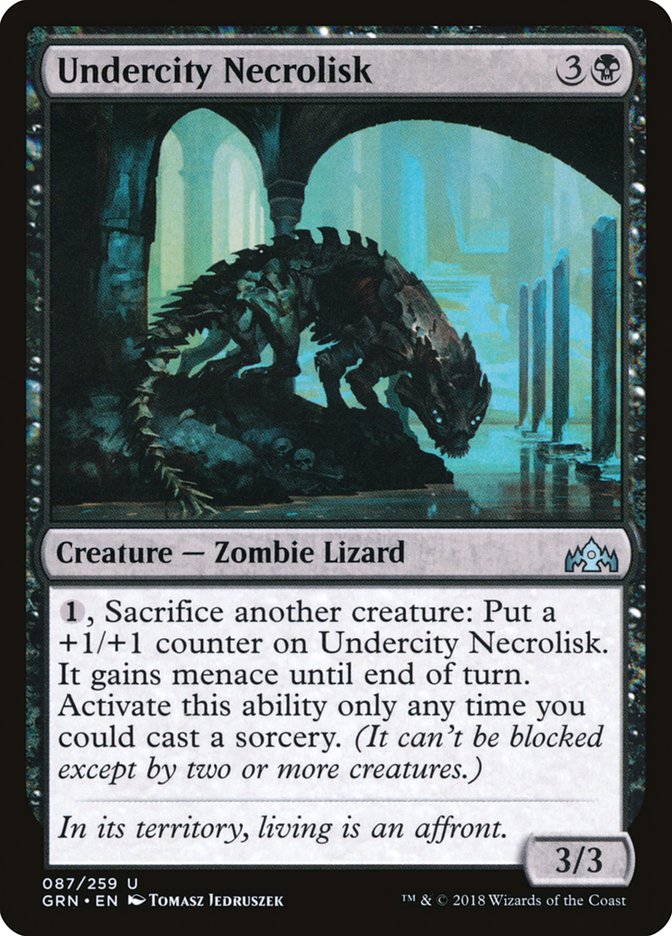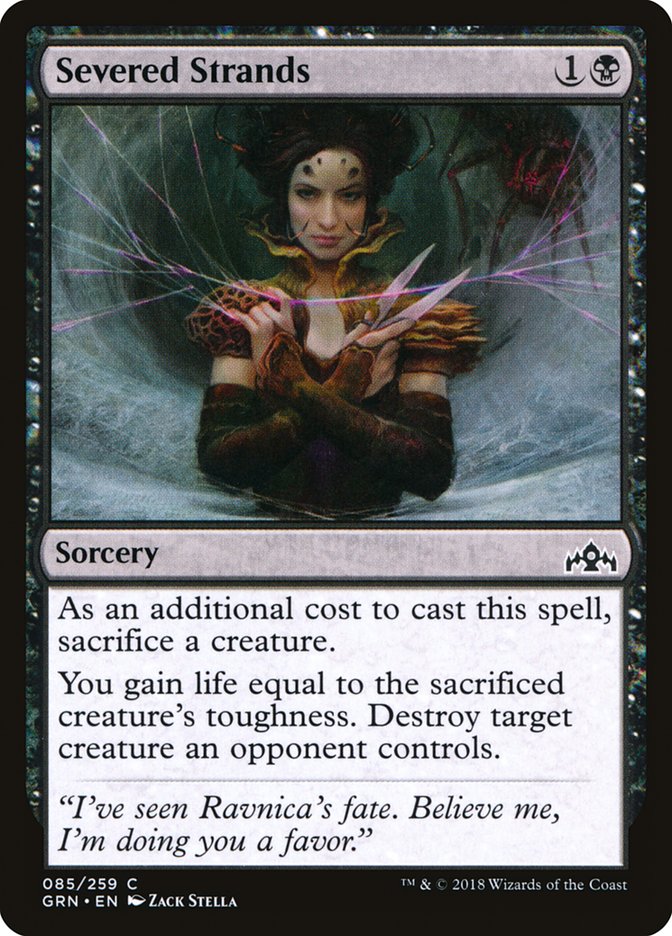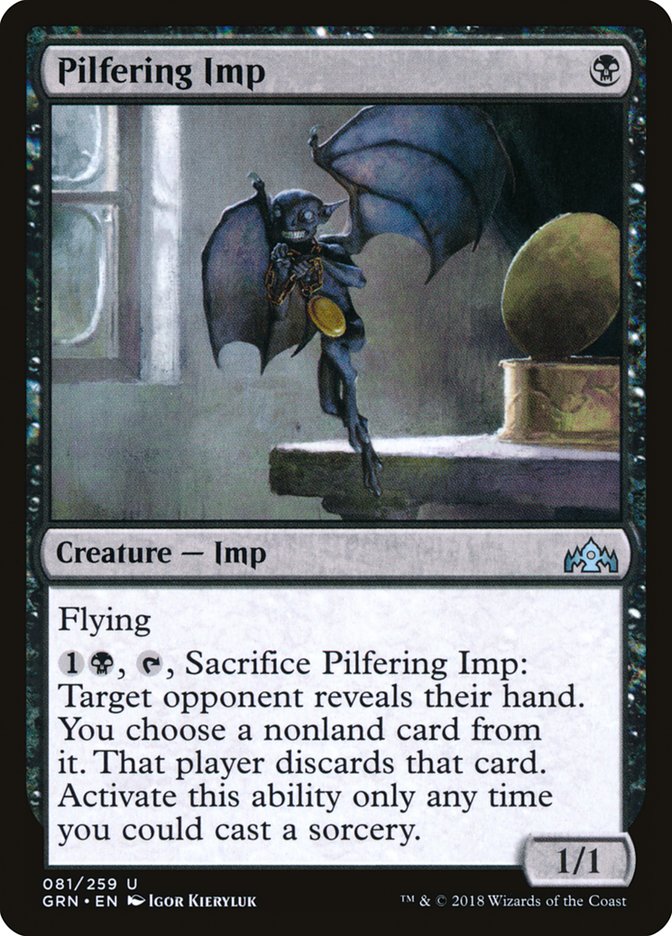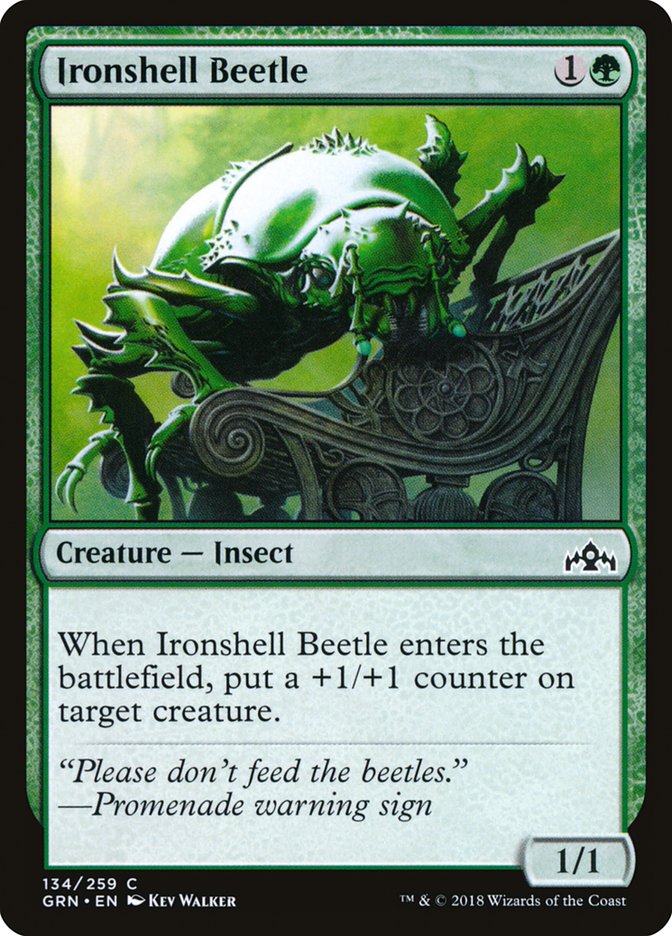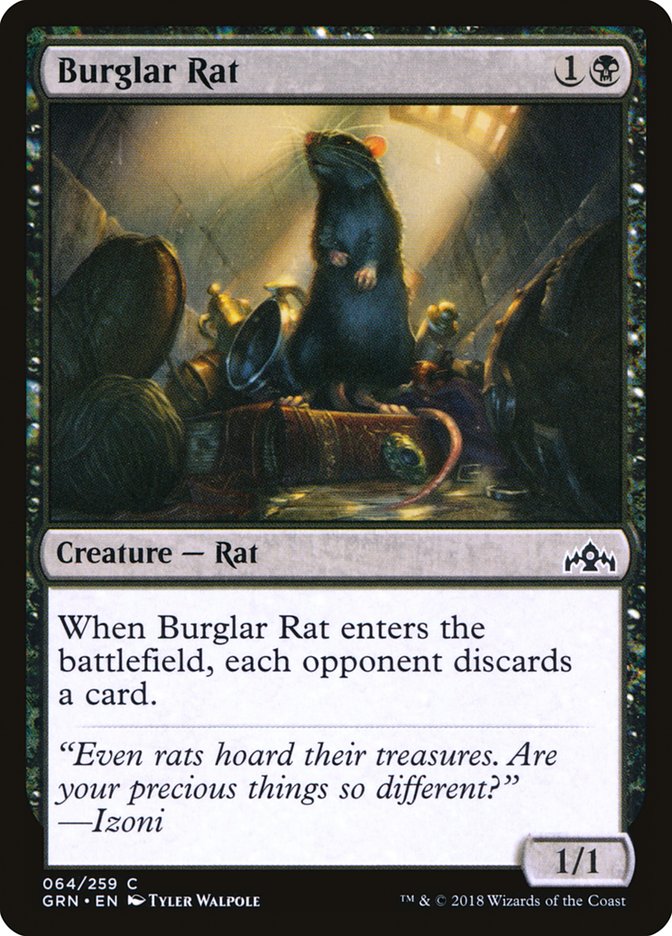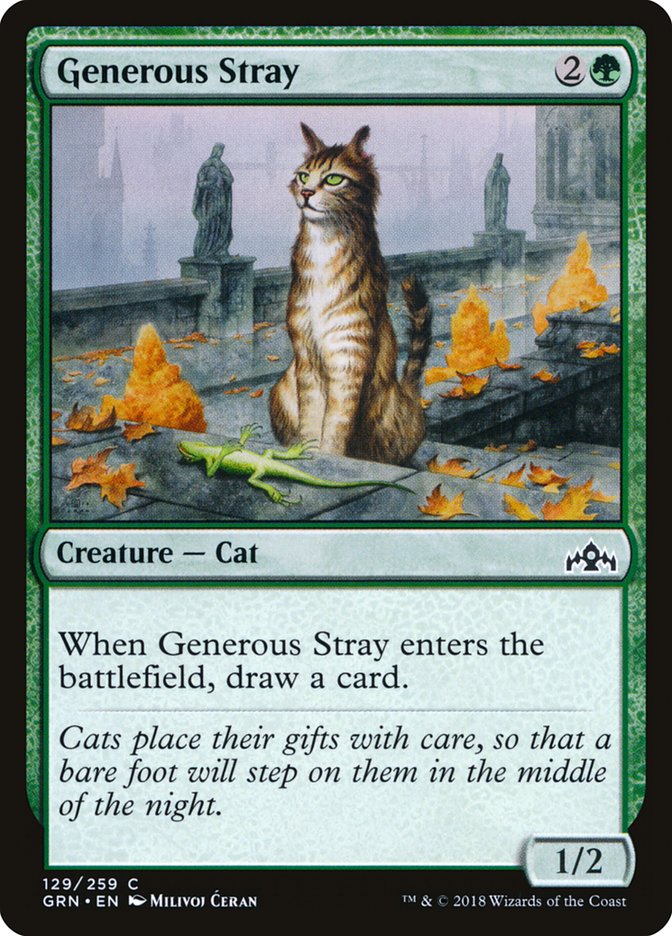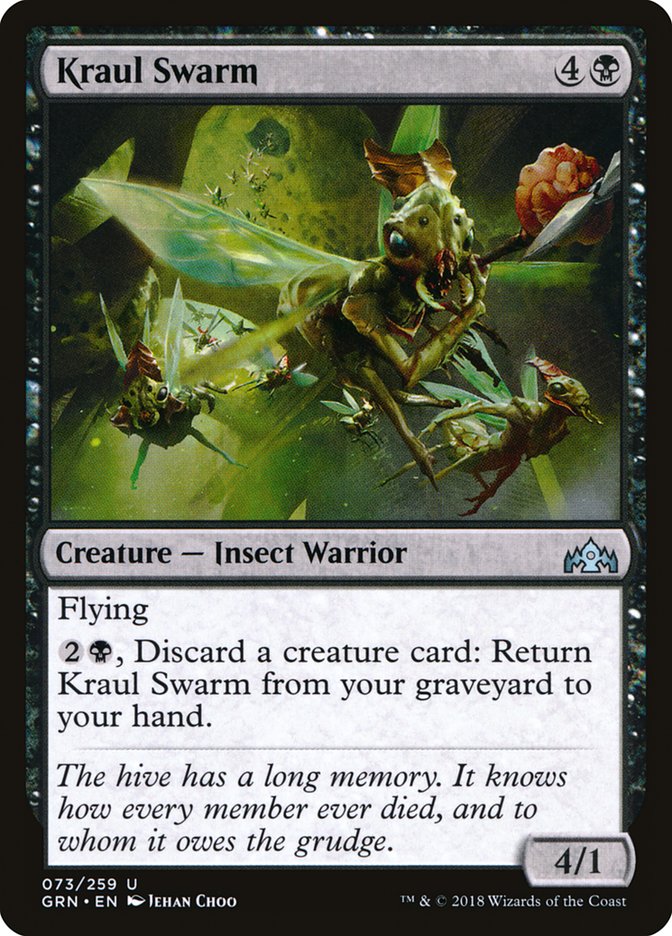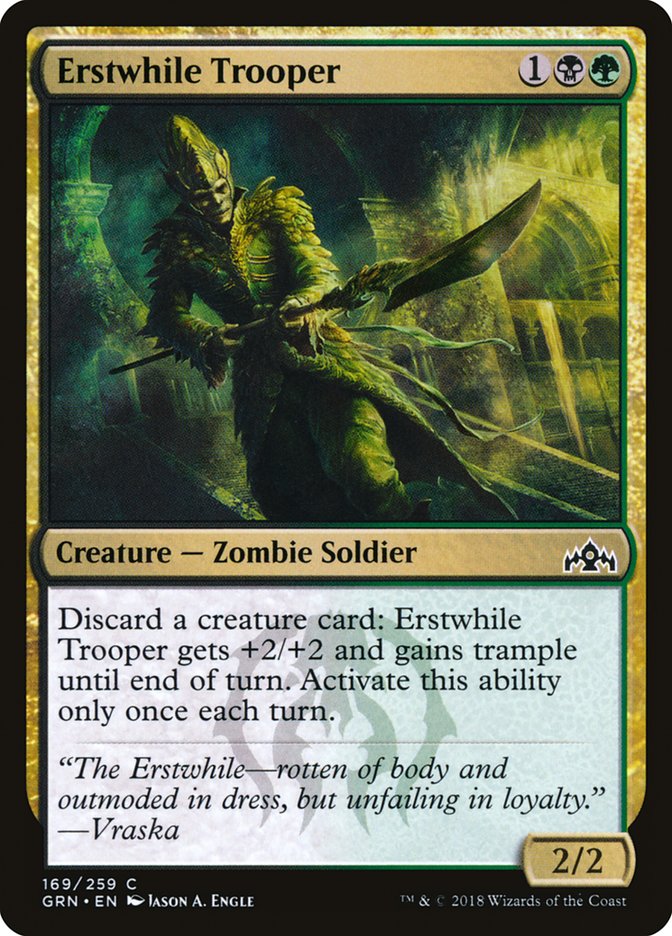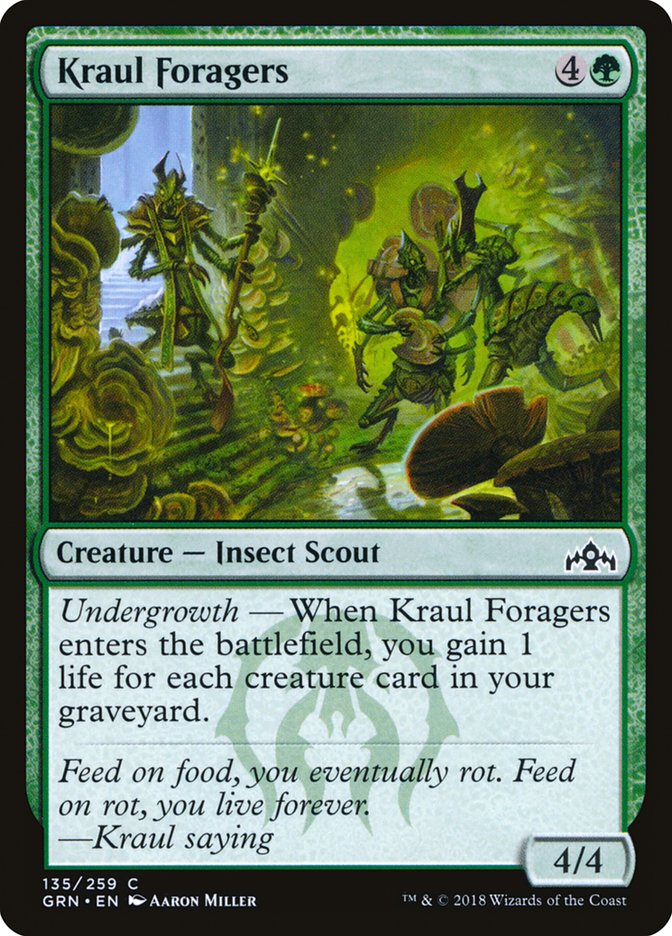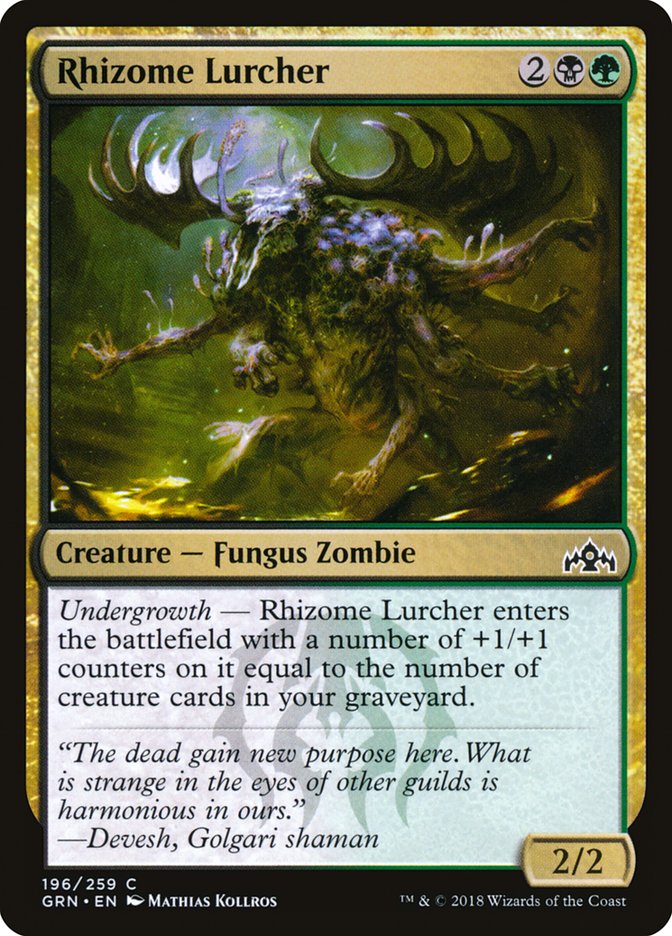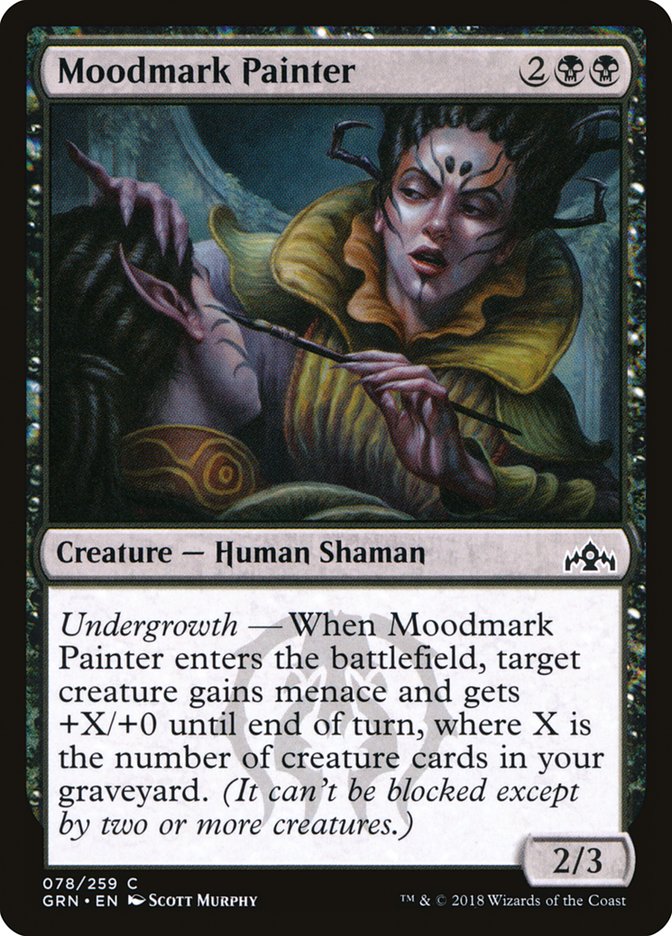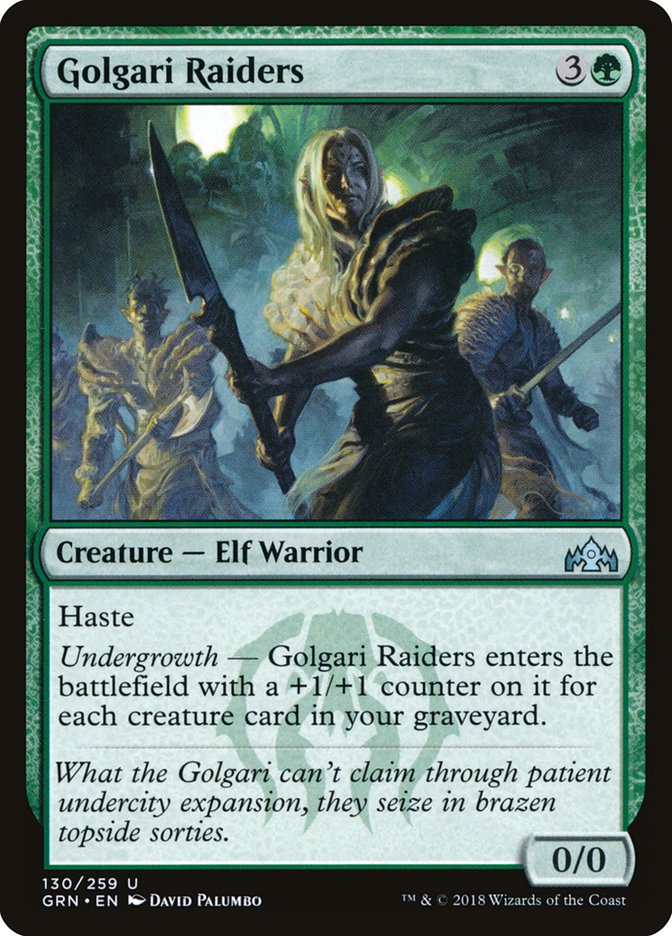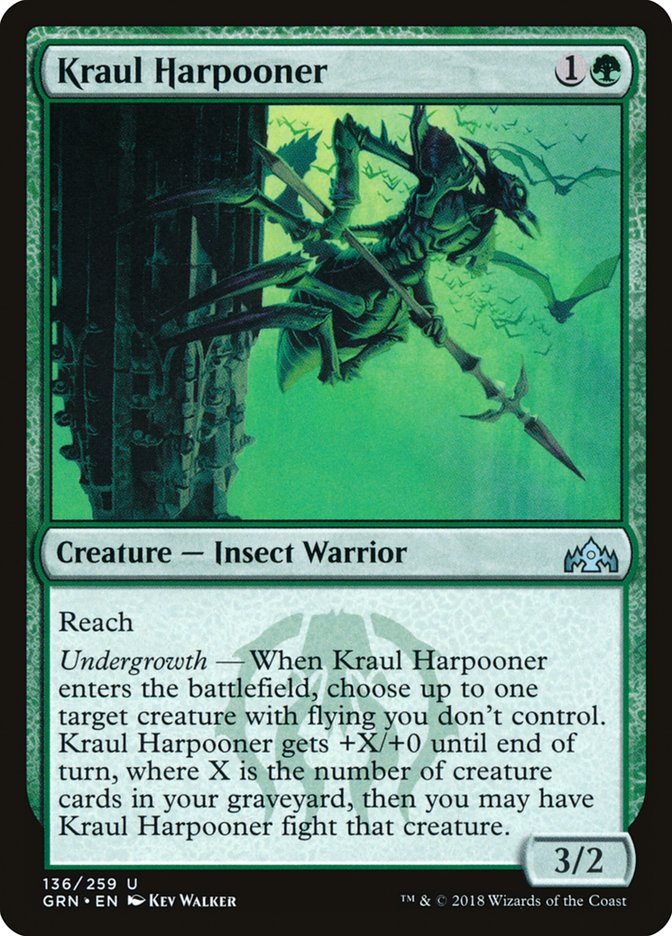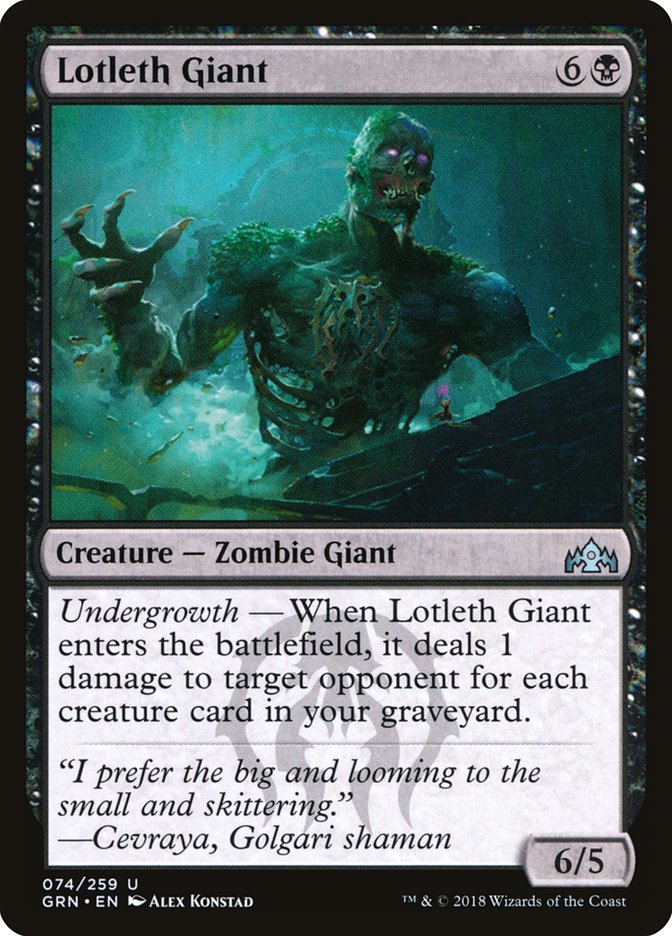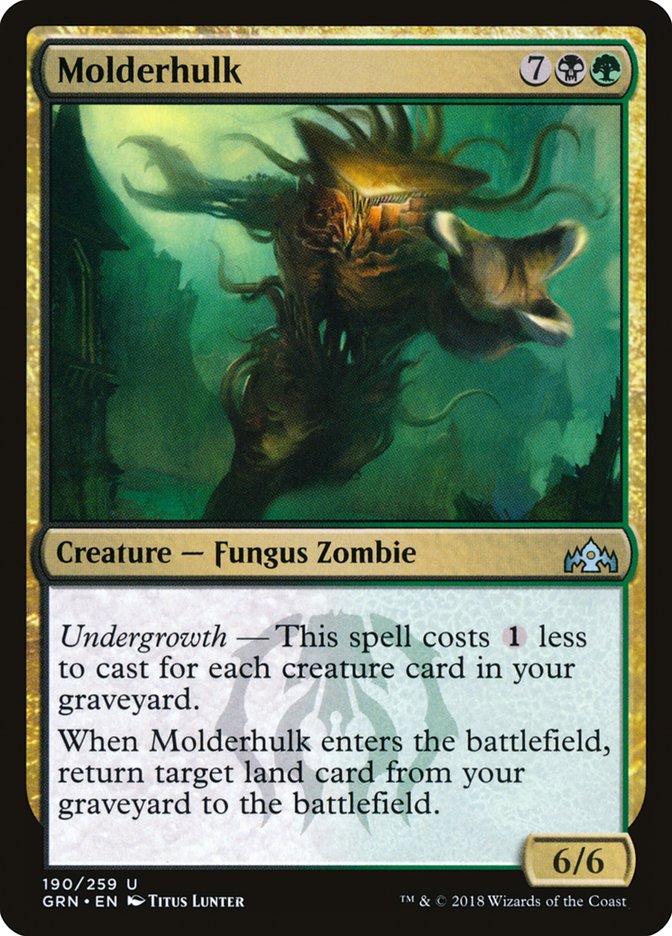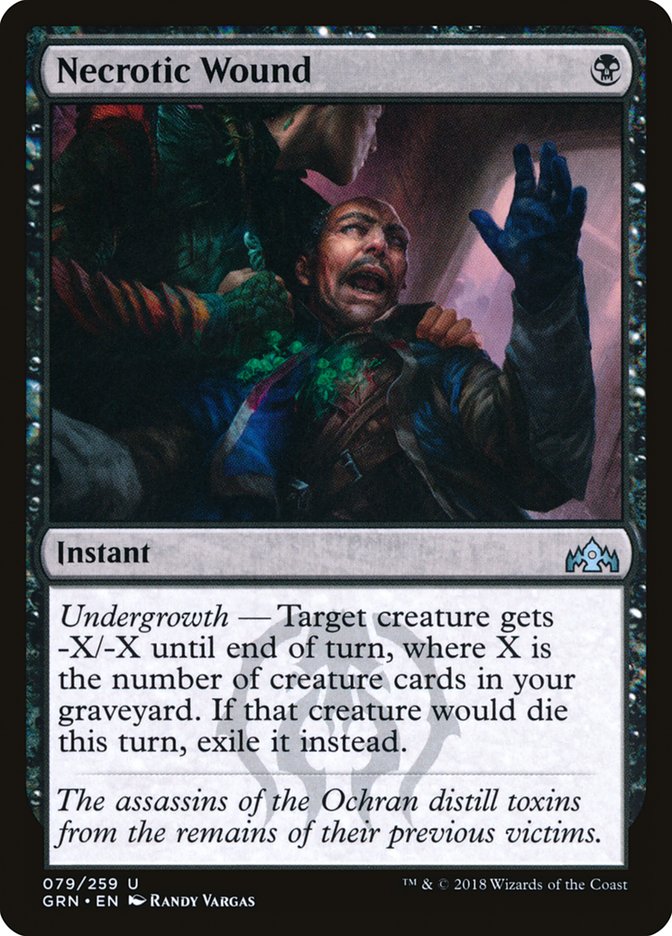I’m worried about Golgari. While undergrowth is a sweet mechanic with a lot
of potential, I’m concerned that both the enablers and the payoff aren’t
good enough. Creature combat and surveil are the main ways to put creatures
into your graveyard. But surveil will be fought over, and my guess is that
combat won’t be enough to put the mechanic over the top. Let’s take a look
at some of the other cards that we have to fuel the graveyard to see if you
can really build an undergrowth deck.
Whelp, that’s it. Yup, Glowspore Shaman is the only non-rare, non-surveil
card that fuels the graveyard. No Grisly Salvage or anything like it. This
doesn’t mean that Golgari isn’t good, but it means that you better
prioritize surveil highly.
Outside of conventional self-mill facilitated by surveil, there are a good
chunk of cards that still fuel the graveyard.
Sacrificing your own creatures for additional value seems to be a theme in
black. Pilfering Imp can get in for some damage and then interact.
Undercity Necrolisk can get quite large. All of these can fuel undergrowth,
so the key to Golgari may be to play all these cards such that if you can’t
trade much in combat, you can still utilize your creatures to good effect.
This may mean that cards like Prey Upon or Undercity Uprising functioning
as Bone Splinters is more common and less detrimental than usual. This is
even hinted in the fact that Severed Strands is in the set.
But in order for this plan to work, there needs to be a good chunk of
disposable bodies. And it looks like this is the case!
All these cards don’t seem fantastic to me, but maybe that’s actually an
upside. If I actively want creatures with “enters the battlefield” effects
or death triggers, it’s nice to live in a world where I don’t have to
prioritize them. It’s especially important given that cards with surveil
are going to be premium.
The nice thing about these disposable bodies is that they help alongside
both axes of creature combat and sacrifice effects to fuel undergrowth.
That second point of toughness on Generous Stray makes a huge difference
because of how easy it makes profitable double blocks. And you won’t even
care if you get blown out by a trick or a removal spell because one of your
creatures already replaced itself and creatures going to your
graveyard is potential upside.
The last type of enabler is discard. While I imagine that Golgari decks
will look to splash cards such as Chemister’s Insight, it’s important to
note that because jump-start is in Izzet only, discard outlets aren’t so
common in Golgari. What we do have are Erstwhile Trooper and Kraul Swarm.
Kraul Swarm is a card that may range from okay to absolutely fantastic. A
recursive flier is nothing to scoff at, and while it requires you to
discard a creature, that does fuel the namesake mechanic. However, there
are a lot of ways to punish one-toughness creatures in this set, so it’s
possible that the 4/1 body is just too risky.
Erstwhile Trooper is a card that is difficult to evaluate. While it’s a
discard outlet to help fuel undergrowth, becoming a 4/4 isn’t likely worth
the card disadvantage. A cheap creature with this threat of activation may
work as a good attacker and blocker, but it’s hard to say how well that
will work out. If the 2/2 is an irrelevant body in this format, I imagine
the potential to be a 4/4 won’t be enough to make this card good. And it
will largely depend on the quality of payoff.
With all of that in mind, here are the commons and uncommons with
undergrowth.
Three of these creatures are beefy. In the latest Lords of Limited podcast,
GRN Prerelease Crash Course
, they discuss the average creature stats of the format. And creatures are
small. Because of this, a card like Kraul Foragers has more of a chance to
shine than you might think. It’s possible that a 4/4 just sits on the
battlefield and has a large effect on combat. In fact, this seems like
Golgari’s advantage. Vigorporm Wurm and Rhizome Lurcher can completely
outsize what your opponent is doing and there’s certainly value in that.
And even Moodmark Painter works well in tandem with large bodies. Giving
menace to a card like Vigorporm Wurm or Siege Wurm is nothing to scoff at
and can just end a game out of nowhere. A 2/3 body is quite poor for four
mana though, so I’m unsure if the card will be worth a precious slot in
your deck.
The uncommon payoff is where the gold is though. Both Kraul Harpooner and
Necrotic Wound have the potential to be extremely efficient removal spells.
However, I wouldn’t expect to get either of those cards too late, as many
decks that can cast them will look to take them during the draft.
Golgari Raiders, Lotleth Giant, and Molderhulk are all in the same camp as
the commons in the fact that they’re just large beaters assuming your deck
can provide enough fuel, although Lotleth Giant may require a bit too much
work to get enough bang for your buck.
With all of that in mind, here’s what I expect the shell of a Golgari deck
to look like. This is built from mostly commons, so maybe a more potent
version will be common, but this seems like a pretty good place to start.
And while I’m still concerned that the mechanic isn’t as good as the others
in the set, this deck gives me hope that Golgari can still be a solid
archetype.
Creatures (17)
- 1 Siege Wurm
- 1 Moodmark Painter
- 1 Whisper Agent
- 1 District Guide
- 1 Swarm Guildmage
- 1 Glowspore Shaman
- 1 Kraul Foragers
- 2 Rhizome Lurcher
- 1 Generous Stray
- 1 Erstwhile Trooper
- 2 Vigorspore Wurm
- 2 Burglar Rat
- 1 Hired Poisoner
- 1 Spinal Centipede
Lands (17)
Spells (6)



